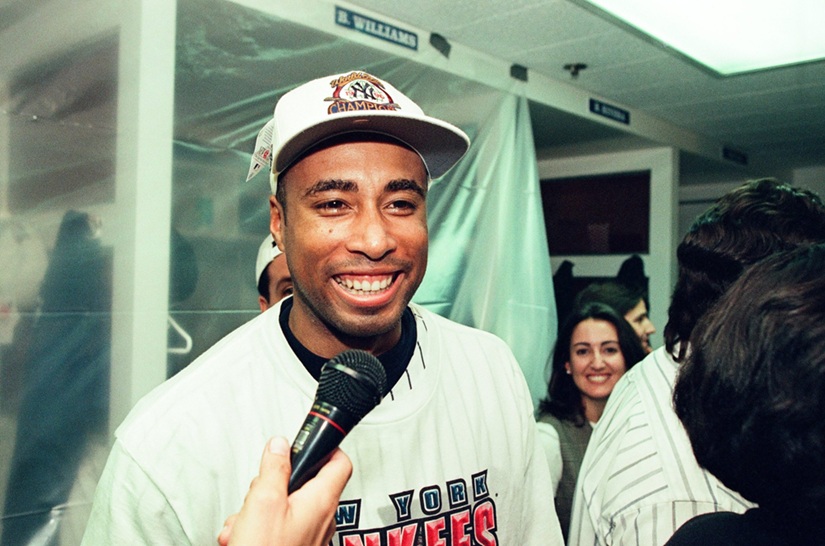Russia has never been short of a ghost or two. The restless souls of Ivan the Terrible and Lenin’s would-be assassin Fanni Kaplan roam the walls and towers of Moscow, whilst the folk of Saint Petersburg rub shoulders with Princess Tarakanova, Tsar Paul I and an invisible old lady in Troitskaya Square. Out in the sticks, meanwhile, the village of Kukoboi in Yaroslavl Oblast is home not only to the witch Baba Yaga, who lives in a hut built on high stilts resembling chicken legs, but a goblin who mutters and plays with the taps in the local bath-house and a laughing mermaid who swims in the Ukhtoma river under the summer moon.
It’s uncommon, however, for any of Russia’s ghosts to keep to any particular schedule (although the sculptor Mikhail Kozlovsky can supposedly be relied upon to knock on the gates of the Imperial Academy of Arts on rainy nights, complaining about the cold in his grave), and predicting their appearances is consequently a tricky business. Against all probability, however, the city of Volgograd was recently able to do just that.
March 27, 2010. Polyot Stadium, Nizhny Novgorod. 1700 local time. The date had been set for weeks, and many in Volgograd could barely contain their excitement. Sure enough, and right on time, 800 kilometres away a genuine ghost, clad in the familiar blue and white of a previous life, stepped out of the past and into the weak evening sun. FC Rotor Volgograd were alive once again.
Rotor, like innumerable Russian football teams before them, died a long time ago. The reason that anybody remembered them at all amongst so many other fading memories – and why their return was greeted with such joy – is a history which, even by Russian standards, is almost impossibly rich and compelling.
The origins of the club go back to 1929 and the soon-to-be-immortal southern city of Stalingrad, where the team was formed by workers at the Dzerzhinskiy tractor factory. As a result, Rotor are, with a single exception, older than any team from outside Moscow or Saint Petersburg currently playing in the Russian Premier League. Appropriately enough, the side was initally known as Traktor Stalingrad, which probably takes the prize for the most Soviet football club name of all time.
Traktor made their debut in the city championship the following year, and then in the national competitions in 1937. Further progress seemed assured – until history intervened.
The entry of the Soviet Union into World War II on June 22, 1941 saw Traktor in Donetsk, preparing for an away match against Shakhtar. Although the game went ahead as scheduled on the 26th, the players returned to their hotel to be greeted by a telegram from the Stalingrad Committee for Physical Culture & Sports ordering their mobilisation. Following a swift journey back home, they learnt that, in common with almost all Soviet industry, the Dzerzhinskiy factory and its workers were to be evacuated beyond the Ural Mountains, out of the reach of German forces.
However, in an act of remarkable bravery, the team made a collective application to forsake the relative safety of Chelyabinsk in south-west Siberia and stay to defend their city. Although the plea was turned down, seven players – Belikov, Ermasov, Gusev, Kolosov, Plonskaya, Sheremet and Shlyapin – nevertheless remained and fought on the front lines of the Battle of Stalingrad, probably the largest – and almost certainly the bloodiest – battle in human history. Konstantin Belikov made a particular name for himself in a special forces unit, making over thirty combat sorties and once single-handedly holding out against a German ambush for over 40 minutes before reinforcements could arrive.
The Battle of Stalingrad, which inflicted the first major defeat on the German armies and was ultimately to prove a turning point in the course of the war, lasted almost 200 days and claimed the lives of up to two million. The path back to normal life would prove a formidable one, with the city almost entirely razed to the ground. Amidst the ruins, a decision was made to commemorate the liberation of February 2, 1943, and just as in the battle which preceded it, the Traktor players were again to play a central role.
The match ’on the ruins of Stalingrad’ is, in its own way, as significant as another World War II game, the ’Death Match’ in Kyiv in 1942, although it has inexplicably never quite achieved the same level of fame. As a member of the city adminstration was to explain over fifty years later, the friendly game played on May 2, 1943 between Spartak Moscow and representatives of local teams at the Azot Stadium – the only sporting venue in Stalingrad to escape total destruction – ”had enormous political resonance. News of the game spread throughout the whole country and beyond and bore testament to the fact that Stalingrad had survived”.
Spartak only arrived on the day of the game, their travel plans having been delayed by German air raids. Flanked by two fighter planes, players from the Moscow side looked down from their aircraft in stunned silence on the still-smouldering city, as goalkeeper Alexei Leontiev recalled: ”Under the plane there stretched black scorched earth, where only grey squares distinguished rows of buildings which had once stretched for miles along the Volga. It was a city of ruins, where beautiful buildings were piled high”.
The team was escorted to a bombed-out school to recover from the journey, where they rested for several hours on mattresses spread across the floor. They then proceeded through the remnants of Stalingrad to the Azot in the southern suburb of Beketonskaya, riding in open-top cars the whole way.
The prepations of their opponents, meanwhile, had hardly been any smoother. Spartak were to face a side dubbed Dinamo Stalingrad, in honour of its overwhelmingly military composition. All of the Traktor players who had stayed at the outbreak of war would play, and years later they would remember the days spent searching the ruined city for their team-mates. Belikov, ever the practical man of action, was also concerned with finding enough pairs of boots amongst the destruction.
The team finally assembled and managed two weeks of hasty training, sticking rigidly to a high-calorie diet of porridge and pickled herring. As Belikov remembered: ”We were, of course, not in the best of form. But once you hear the ball sing, your heart starts to jump. It’s football, after all.”
At the 3,000-capacity Azot, nearly 10,000 were in place. Most were soldiers, as what remained of the civilian population was only slowly returning to the city. Before the game kicked off, the Stalingrad players were awarded medals for their role in the liberation. One of the fighter planes which had accompanied Spartak’s flight to the south then flew low over the ground and dropped the match ball onto the pitch, where it hit one of the many divots on the surface and bounced away into the stands. The organisers, fortunately, had a replacement to hand.
Several precious photographs and a short film clip of the match survive. One of the former shows a view of one of the stands, consisting of uneven long wooden benches, with a couple of trees behind it. Above the ground hovers an airship. In the foreground is a battered scoreboard, also made of wood, which reads ’Spartak’ and is accompanied by a smaller, lower board which supports a tile reading ’0’. Resting against the foot of this board, ready for use, is a replacement tile reading ’1’.
The tile was never needed. Dinamo, up against opponents who had spent the war far from the front, training and playing friendly games, somehow scored the game’s only goal in the 39th minute through Moiseyev, with an assist from who else but Belikov, before holding out against a second-half onslaught from Spartak. As one newspaper put it, defending a goal is simpler than defending a city.
Football in Stalingrad had secured its place in history – even as that same history continued to wash around it. That evening, as players from the two sides attended a jazz concert held in the open spring air, the peace was suddenly shattered by the thunder of anti-aircraft guns as a group of Nazi bombers passed overhead on an ultimately unsuccessful mission to undermine the banks of the Volga. Despite the ongoing war, however, league football was once again played in Moscow and Leningrad within a week of the game in Stalingrad.
The following fifty years would bring little in the way of additional glory and much in the way of name changes – the Traktor players, reunited at the end of the war with their returning team-mates from Chelyabinsk, who had kept themselves in half-decent shape by training between shifts and at weekends, saw their club become Torpedo Stalingrad three years later, before returning to the old Traktor moniker in 1958. As a consequence of Khrushchev’s de-Stalinisation programme, the city itself changed name to Volgograd in 1961, with the team following suit, and it was only in 1975, after two further alterations, that the name Rotor Volgograd finally came into being.
Rotor were, in short, content to live on memories. However, as the Soviet Union disintegrated, the club embarked on a new adventure which, although lacking the historical resonances of their previous achievements, nevertheless possessed a force all of its own. Winners of the Soviet First League in 1991 in its last-ever season, Rotor went on to finish second in the top division to – who else – Spartak in 1993 and qualified for the UEFA Cup. The stage was set for the old factory team from the lower reaches of the Volga to once again manufacture a name for themselves.
Which they promptly went and did. Rotor fans still pained by what came after the heady days of 1995 reminisce even today of the evenings when Zinedine Zidane, Bixente Lizarazu, David Beckham and Paul Scholes appeared at the Central Stadium in front of 40,000 supporters – and when Rotor shocked Europe.
Although holding the mighty Manchester United to a goalless draw in the home leg of their first round UEFA Cup tie was a considerable achievement, it was the return game in England on which the modern legend of Rotor rests. Those who saw it were at a loss to explain the verve with which a completely unintimidated Rotor set about their illustrious opponents at Old Trafford, going two goals up in the first 25 minutes. Although Scholes pulled a goal back on 60 minutes, only the unlikeliest of last-minute headers from goalkeeper Peter Schmeichel preserved what was then a 56-match home unbeaten streak in European competition for United, who nevertheless exited the tournament on away goals.
The secret to Rotor’s fearlessness was only revealed years later by their manager Viktor Prokopenko shortly before his tragically early death – despite a lifetime’s abstinence from alcohol – in August 2007. In Prokopenko’s words, the atmosphere in the dressing room before the game was actually very different: ”I could see that the players were trembling. The match was to start in five minutes, but they couldn’t go on the pitch in that state. So I said to them: ”You know what’s most important about driving a tank? Not to shit your pants”. They all burst out laughing, relaxed and went onto the pitch. Twenty minutes later they had scored two goals…”
Although Rotor narrowly lost in the next round to eventual finalists Bordeaux – with Vladimir Niederhaus, scorer of the opening goal at Old Trafford, again netting in the away fixture – the club had once again written themselves into the annals of Russian footballing history. Sadly, that night in Manchester was to prove the high point of what was to become a precipitous slope. Almost as rapidly as it had arrived, their dynamism and strength began to slip away, and Rotor – despite another runner’s-up finish in 1997 – endured a series of increasingly poor campaigns before finishing last in the Russian Premier League in 2004. Perhaps ominously, it had been their thirteenth season in the top flight.
The descent to the Russian First Division may involve a cold, hard landing, but there was still no excuse for what happened next. Despite a devoted fan base, despite widespread national affection which transcended ordinary club loyalties, despite one of the best youth systems in Russia, and despite the veteran’s associations who organised regular games between old Rotor and Spartak players to commemorate the match on the ruins of Stalingrad, the city of Volgograd, which had previously provided the majority of the team’s funding, let Rotor die the following winter. Even United hadn’t forgotten them – with a touch of real class, they had sent the club a card every New Year. Seemingly the only people indifferent to Rotor’s fate were those closest to them.
The Russian Professional Football League (PFL) therefore had no choice but to deprive Rotor of its professional licence on the final day of January 2005. The club had been unable to provide the necessary financial guarantees, with several debts unpaid and no backer willing to step forward, despite sterling efforts by management to strike a deal with the city. One exasperated board member asked, with some justification, why the regional authorities in Kazan and Rostov were willing to help support their local sides, whilst those in Volgograd were seemingly determined to do nothing.
Strong passions were aroused by the disappearance of Rotor, with fans of sides across Russia – notably those of Spartak – registering vocal disapproval at great length. A single word was enough for one local paper in Volgograd, however, which simply ran the headline ’Buried’ across the front page.
Rotor had not long been laid to rest before the ghosts began to appear. The first bore the most resemblance to the departed, as the pale, haggard form of Rotor-2 Volgograd, Rotor’s former reserve team, shuffled into the spring sunshine several months later to compete in the Russian Second Division. A year later, Rotor-2 changed name to just plain old Rotor.
Hold onto your hats here (or at least a pen and some paper). The new Rotor continued to play in the second division until 2009, when the financial problems which had bedevilled its ancestor once again reared their head. With an embargo placed on the club and court orders issued to seize its property and accounts, an entity which could be described as Rotor Volgograd 3.0 was formed in the opening months of the year, intending to take over the treasured name. However, it took until July for Rotor to withdrew from league competition, meaning that the newcomers were forced to dub themselves FC Volgograd in the interim.
This latest ghost finished third in the south zone of the Second Division at the end of 2009, with 39 year-old midfielder Oleg Veretennikov, who had starred for the original Rotor back in the 1990s and still the Russian Premier League’s all-time leading goalscorer, voted the league’s player of the season. Full of confidence, FC Volgograd applied to replace Vityaz Podolsk in the First Division (the latter having been forced by financial pressures to give up their spot, despite finishing eleventh in 2009), and on February 8, 2010 club officials, flanked by regional governor Anatoly Brovko and PFL head honcho Nikolai Tolstoy, announced the success of the petition. FC Volgograd would play in Russia’s second tier – and would be known as Rotor Volgograd.
How far the new Rotor is a genuine successor to the original club remains a matter of discussion. Perhaps surprisingly for a part of the world with such a strong sense of historical propriety, opinion has been overwhelmingly positive. It is certainly worth noting that Rotor’s complex resurrection is by no means a unique phenomenon in Russia – anyone asking for the real Torpedo Moscow or FC Zhemchuzhina-Sochi to stand up should be prepared for a deafening chorus of ”I’m Spartacus!” – and fans are fairly used to clubs disappearing and metamorphosing on a regular basis. As usual with ghosts, the consensus seems to be that if you believe that something’s real, then that’s good enough.
Which brings us back to the Polyot Stadium in Nizhny Novgorod. Although the many who followed Rotor’s inaugural game, both across Russia and beyond, ultimately had to be content with a goalless draw, they could nevertheless bear witness not only to Veretennikov, now Rotor’s assistant manager, manically waving his arms about on the faded touchline, but also to the insuppressible past, alive once more. Through wars, fame, betrayal and rebirth, from the ruins of Stalingrad to the Theatre of Dreams and beyond, FC Rotor Volgograd just will not die.
Add Sportslens to your Google News Feed!






